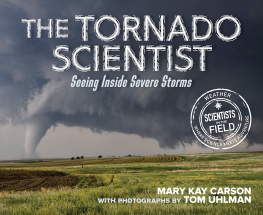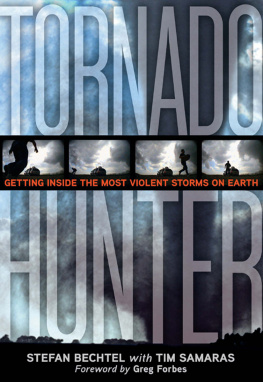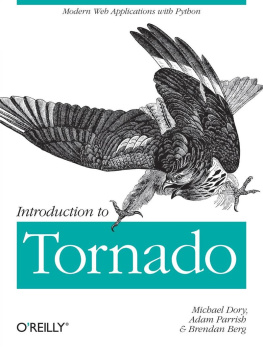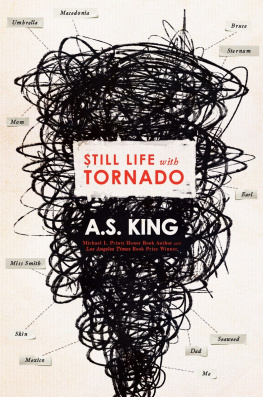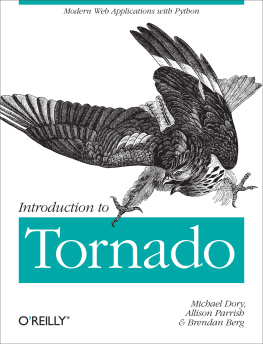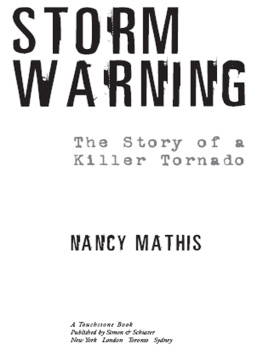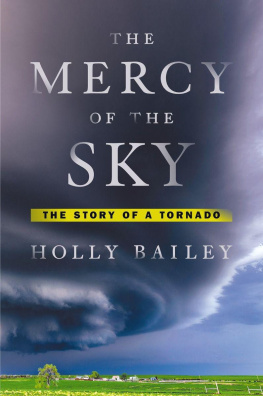For Dan Jr. and Paul
Text copyright 2019 by Mary Kay Carson
Photographs copyright 2019 by Tom Uhlman
Additional photo credits can be found on .
All rights reserved. For information about permission to reproduce selections from this book, write to or to Permissions, Houghton Mifflin Harcourt Publishing Company, 3 Park Avenue, 19th Floor, New York, New York 10016.
hmhbooks.com
Cover photograph Jason Persoff Stormdoctor
Cover design by Andrea Miller
The Library of Congress has cataloged the print edition as follows:
Names: Carson, Mary Kay, author. I Uhlman, Tom, illustrator.
Title: The tornado scientist : seeing inside severe storms / Mary Kay Carson ; with photographs by Tom Uhlman.
Description: Boston ; New York : Houghton Mifflin Harcourt, [2019] | Series: Scientist in the field | Audience: Ages 1012. | Audience: Grades 4 to 6.
Identifiers: LCCN 2018034811 | ISBN 9780544965829 (hardcover)
Subjects: LCSH: Tanamachi, RobinJuvenile literature. | TornadoesJuvenile literature. | Storm chasersBiographyJuvenile literature. | MeteorologistsBiographyJuvenile literature. | Women scientistsBiographyJuvenile literature.
Classification: LCC QC955.2 .C364 2019 I DDC 551.55/3dc23
LC record available at https://lccn.loc.gov/2018034811
ISBN 978-0-544-96582-9
eISBN 978-0-358-05592-1
v1.0219

Dan Dawson and a colleague carry a PIPS near a radar truck. Its made to be heavy so itll stay upright in strong winds.
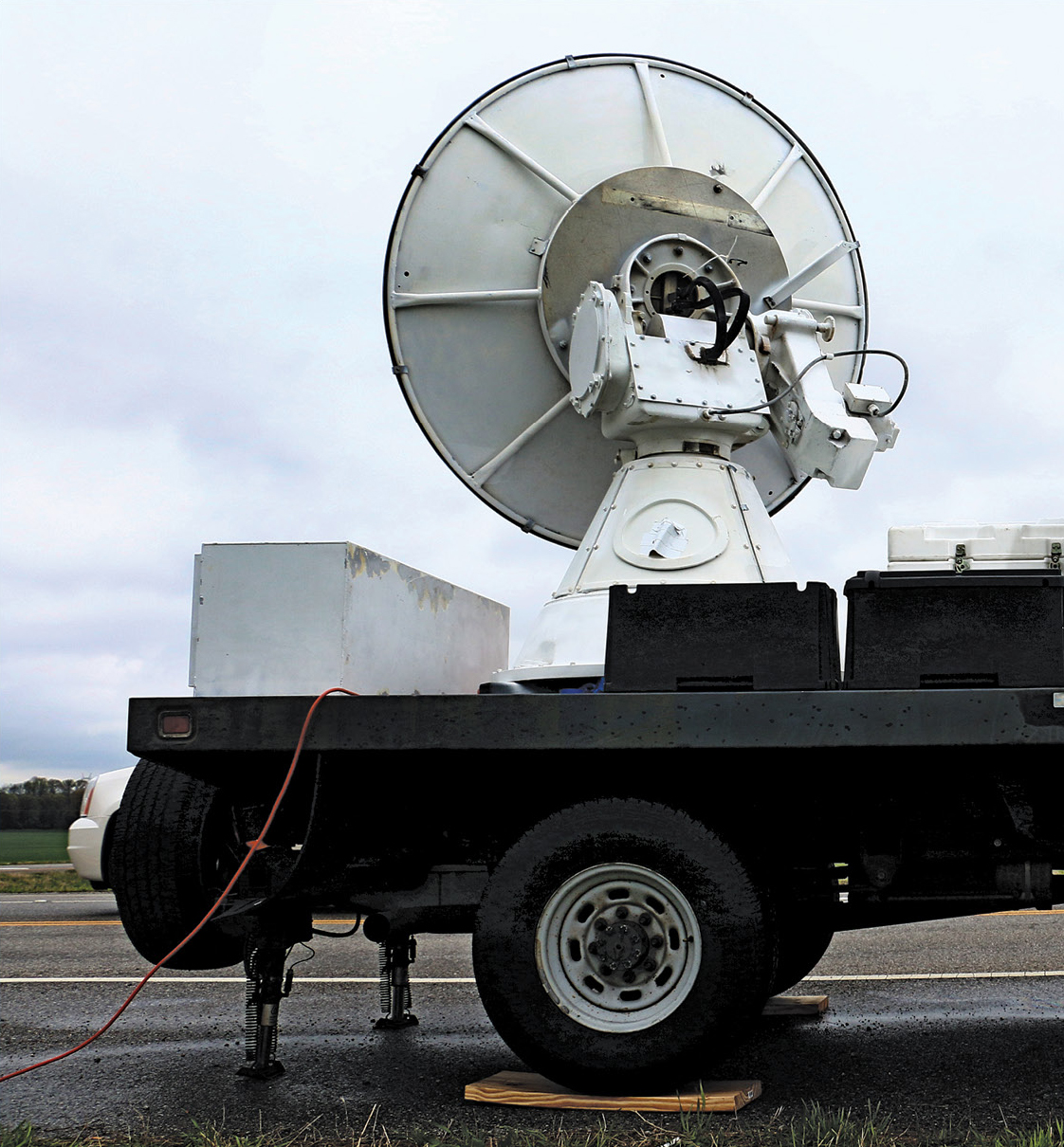
Robin and her team get the radar truck parked and ready to scan for storms.
Chapter 1
A Southern Twist
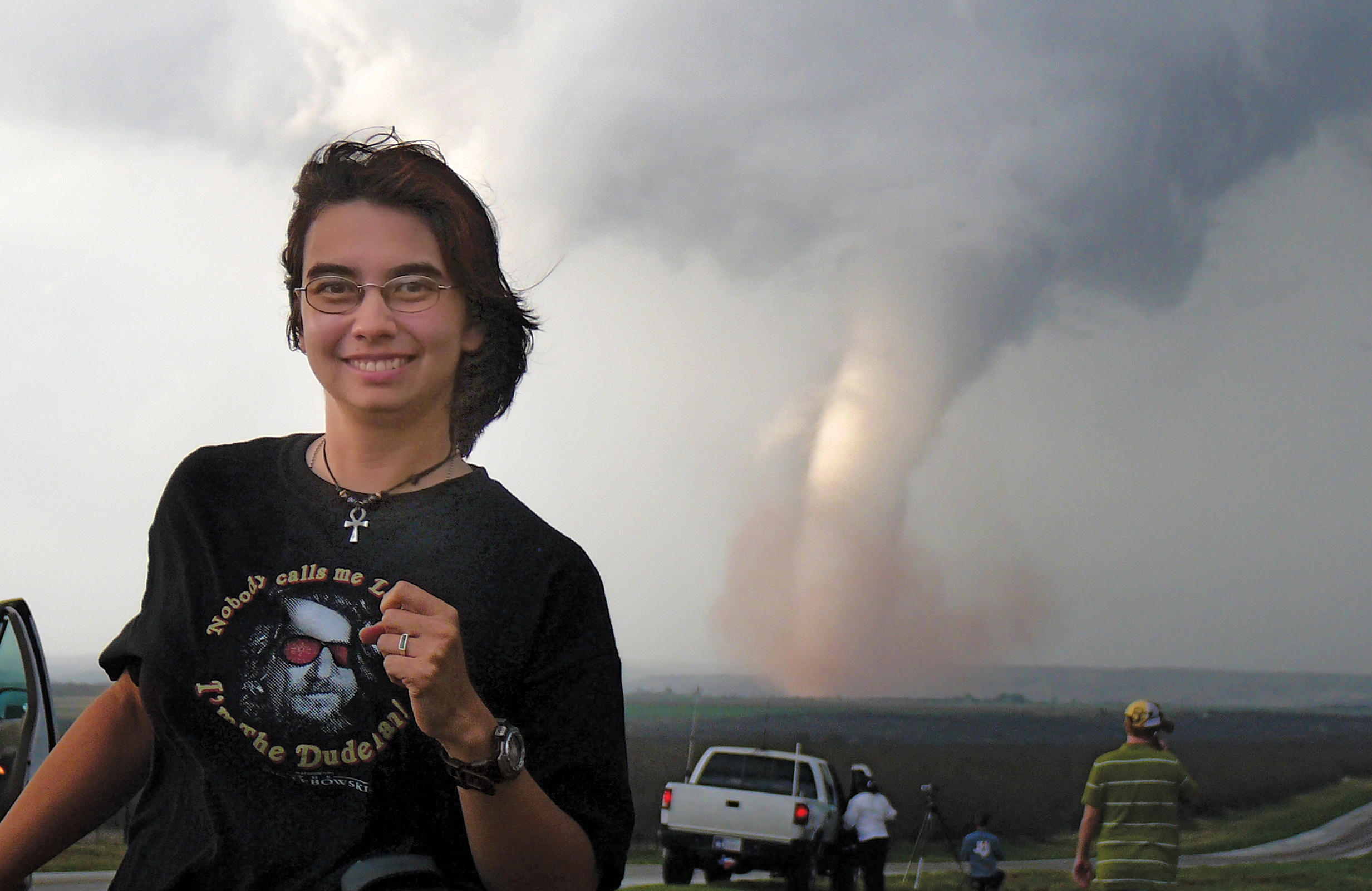
This 2007 Texas twister is one of the many tornadoes Robin has seen while storm chasing.
B eep... beep... beep... An odd-looking truck backs up slowly. The vehicle is on a bridge that crosses over a highway. Once safely settled onto the shoulder, the truck stops. But its windshield wipers keep goingslapping away the steady cold rain.
As soon as the beeping backup alarm goes silent, a door swings open. A woman scrambles out, her black hair tossed by the wind and her glasses gathering raindrops. She jogs to the rear of the unusual flatbed truck, pulls the starter rope on a generator, plugs an orange extension cord into it, and sprints for the shelter of the truck cab. Robin Tanamachi is back inside within two minutes. Maybe three.
A whirring noise soon starts up. Its loud enough to hear over the wind and traffic and is coming from the back of the truck. A contraption towers over the cab from its mount on the trucks bed. It looks a bit like a giant mechanical mushroom.
The big white machine slowly swivels as it whirs. Whhzzzszzzhhh. It turns toward a group of fast-moving dark clouds off in the distance. The angry-looking patch of sky speeds over an old red barn on its way toward the waiting truck.

Robin checks in with the radar map during an Alabama storm chase.
This is a mobile radar truck, a vehicle with a radar mounted on its back. Weather scientists, called meteorologists, use mobile radar to track severe weather. Researchers drive radar trucks to a storm so they can scan it up close and see whats going on inside the dark clouds and whipping winds. Radar trucks are how storm-chasing meteorologists study Earths fastest windstormstornadoes.
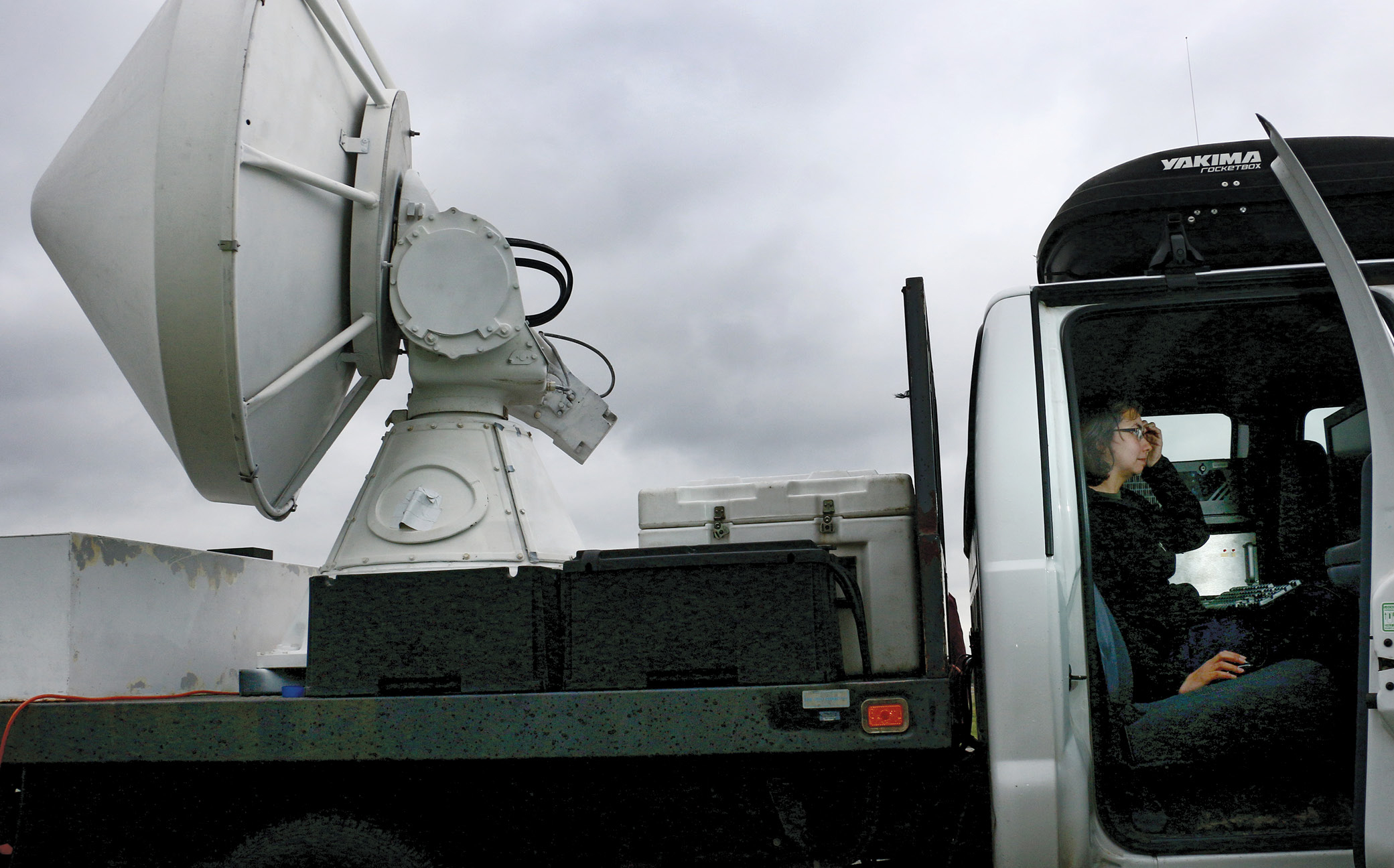
The radar truck is a vehicle, a mobile weather instrument, and a computer lab.
Outside might be wet and windy, but the inside of the truck looks like a cramped computer lab. Half of the cab is filled with bolted-down electronic equipment. Three humans are stuffed in there, too. Each stares at weather-tracking maps on laptop screens.
The big storms are still pretty far away. And they arent all that strongat least not yet. So why arent these tornado researchers driving toward the storms? What happened to the chase in storm chasers?
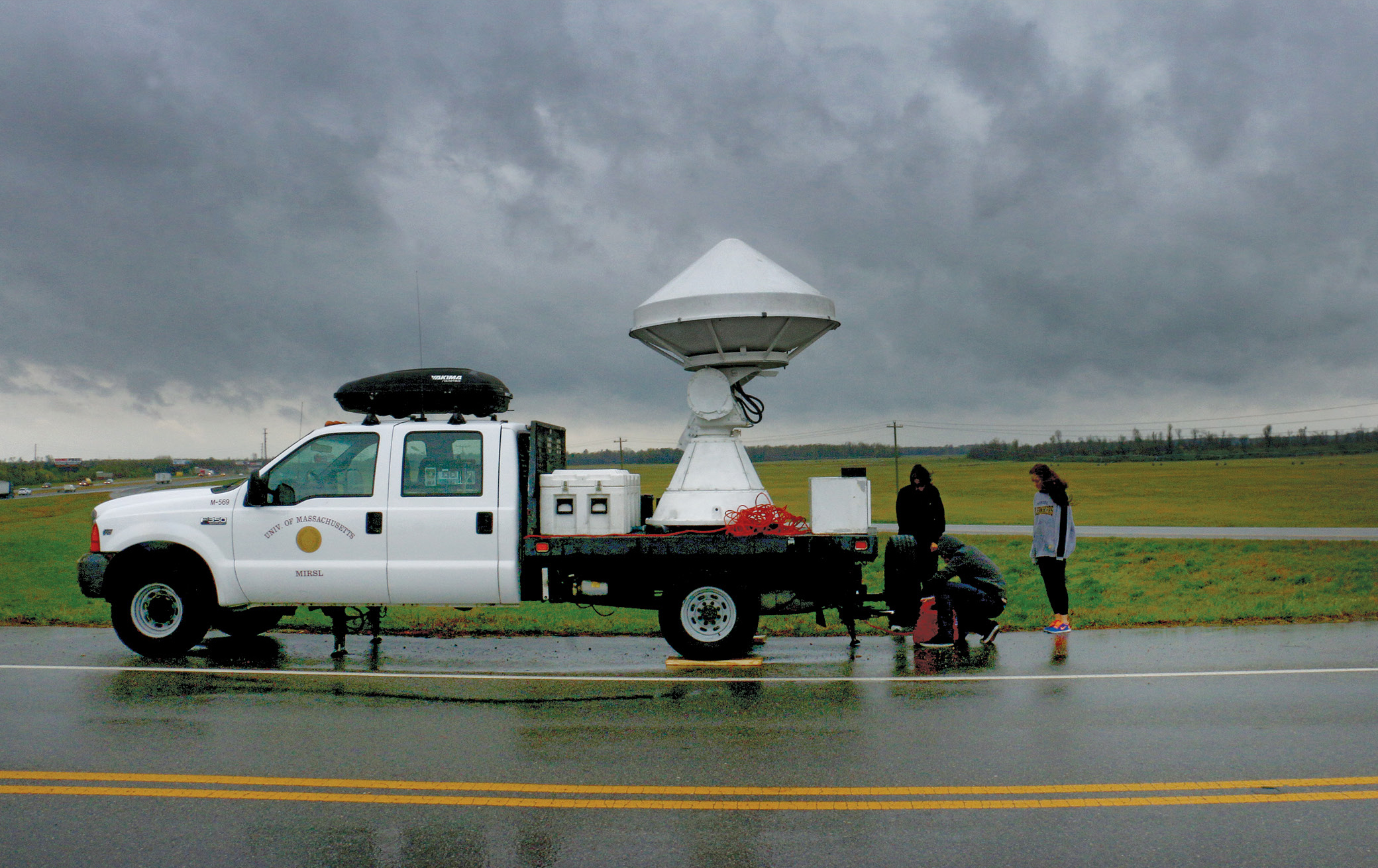
Robin and her team get the radar ready to scan the coming storm in Alabama.
AMERICAS STORMY SPOTS
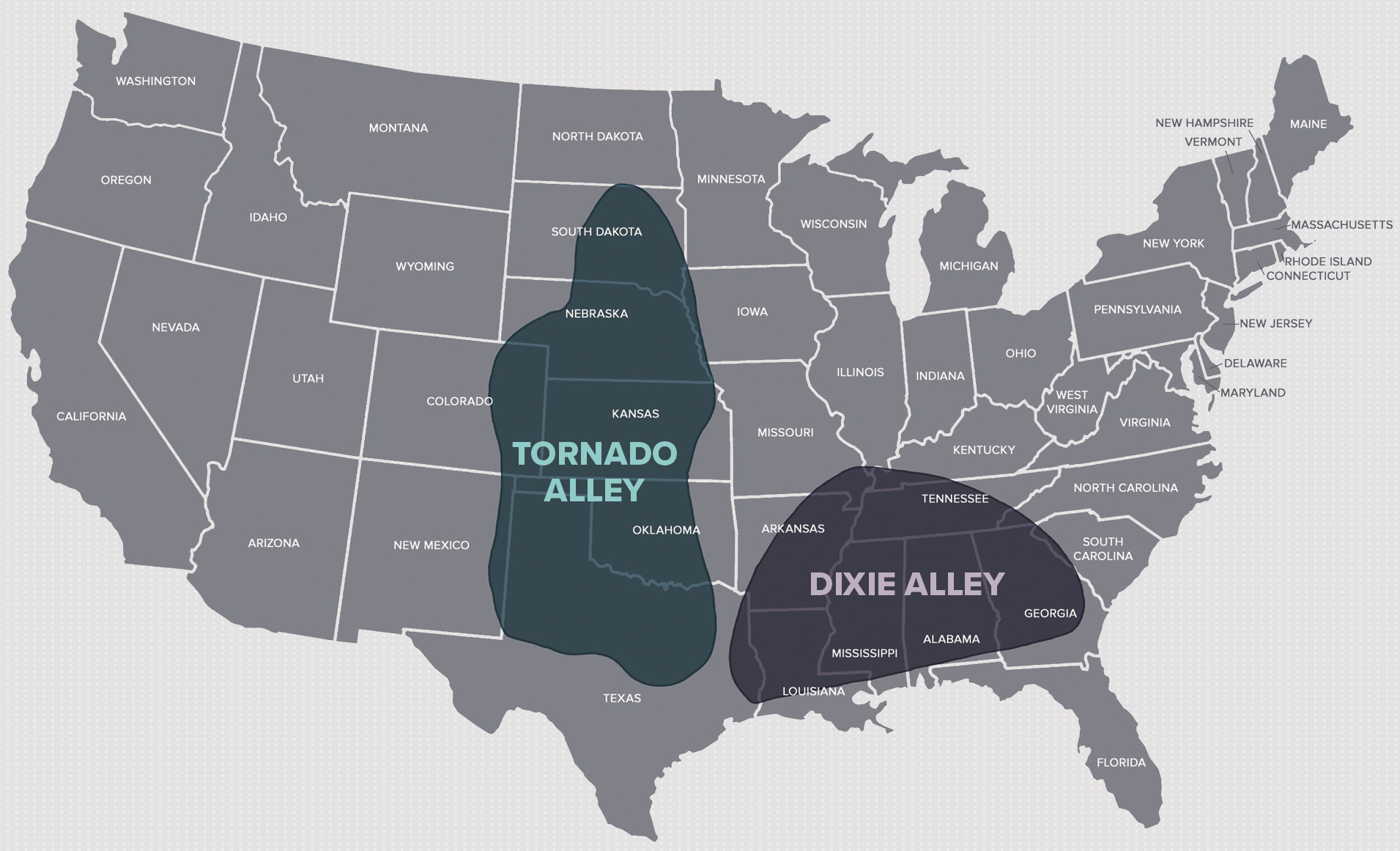
Tornadoes happen in nearly all states east of the Rocky Mountains, but these areas are especially prone to strong twisters.
THE OTHER TORNADO ALLEY
Robin Tanamachi is a meteorologist, tornado scientist, and radar expert. She is also a veteran storm chaser. Shes crisscrossed Tornado Alley from Texas to the Dakotas. Chasing down a storm as it spins out a tornado is pretty much her favorite thing to do. Its why Robin became a scientist. But todays tornado hunt is different.
Her team is hunkered down in the truck, waiting for the storms to come to them. Its not the safest setup. If a tornado suddenly drops out of the sky, itll take a while to shut down the radar and drive away. Theyre sitting ducks.
A big pickup slows to a stop alongside the radar truck. Robin rolls down her window. The pickup driver wears a ball cap and friendly smile.
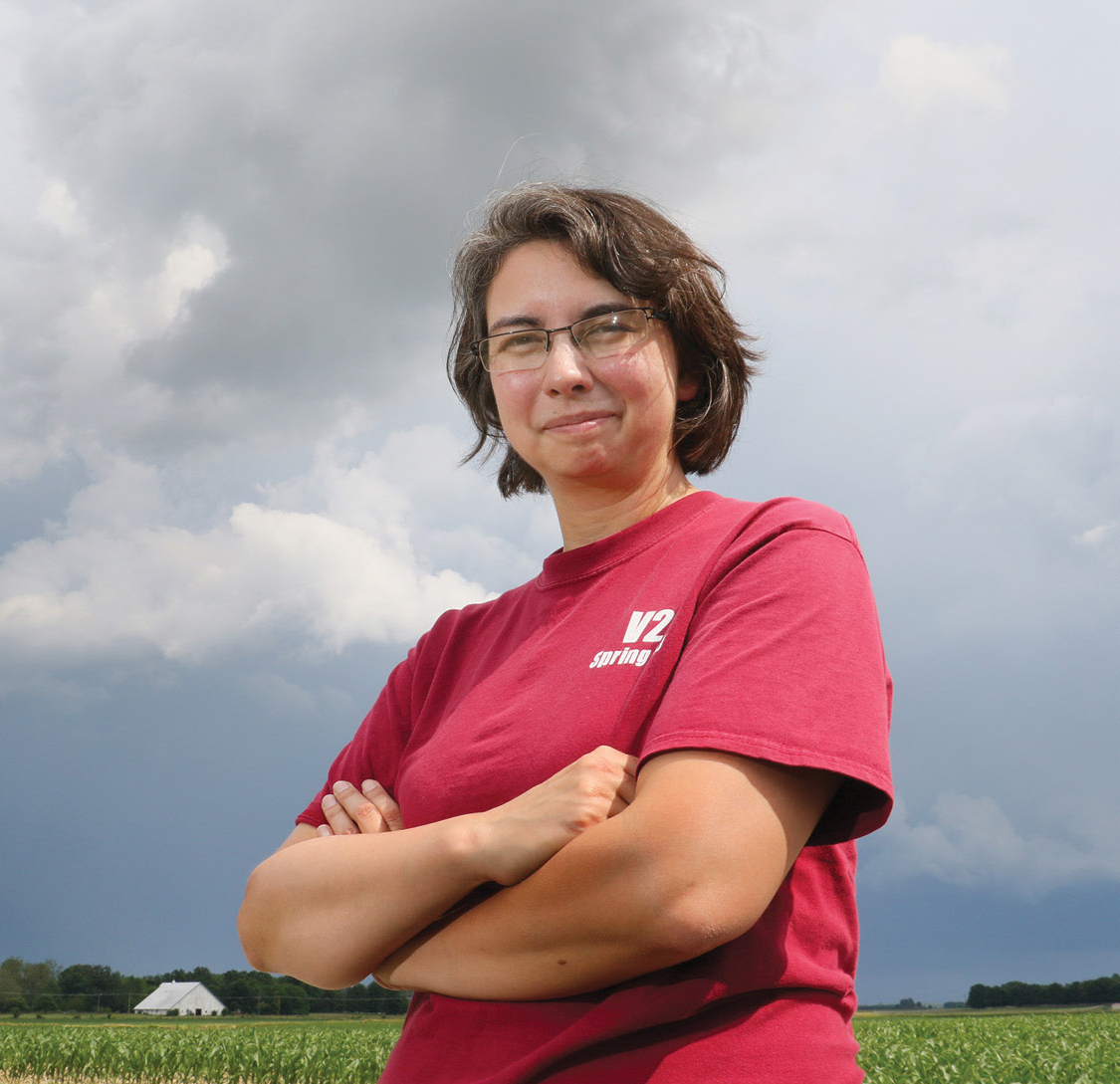
Stormy skies have always fascinated Robin.
Yall need help? he asks in a southern drawl as thick as country ham.
This isnt Kansas, or any of the Great Plains states of Tornado Alley. Its the American South. Alabama, to be exact. Southern states like Alabama, Georgia, and Tennessee might not be the first places youd name when thinking about dangerous tornadoes. But they should be.
Twisters kill more people down South than in the Great Plains. Why does the so-called Dixie Alley region have such deadly tornadoes? The laws of physics arent different here, says Robin. Water still evaporates at 212F [100C] degrees. Gravity pulls rain down toward the ground the same way in both Tennessee and Texas. But the two twister alleys arent identical. Some of those differences are weather related, but not all.
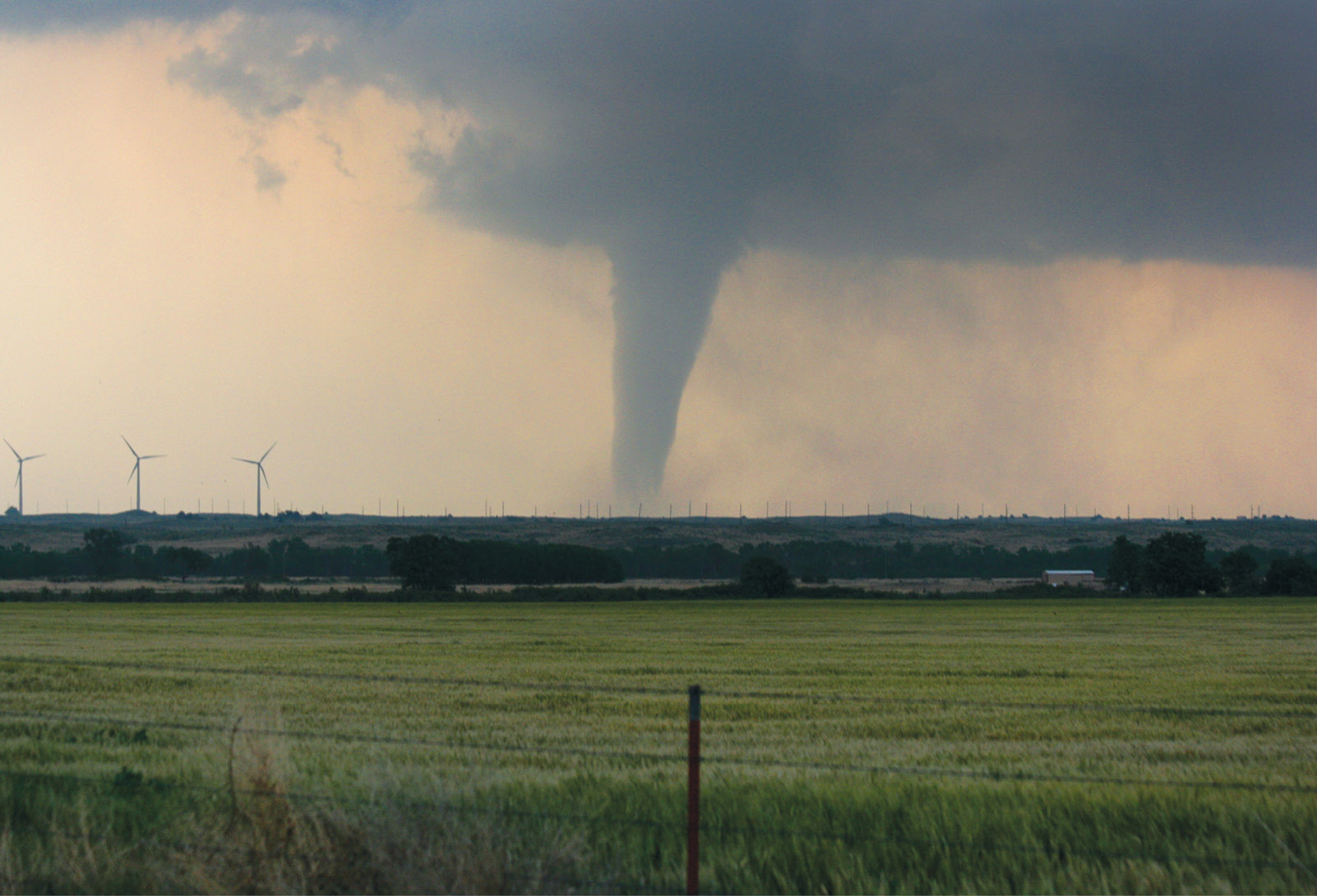
Tornado chasing can be dangerous, but its how scientists collect information on these short-lived storms.
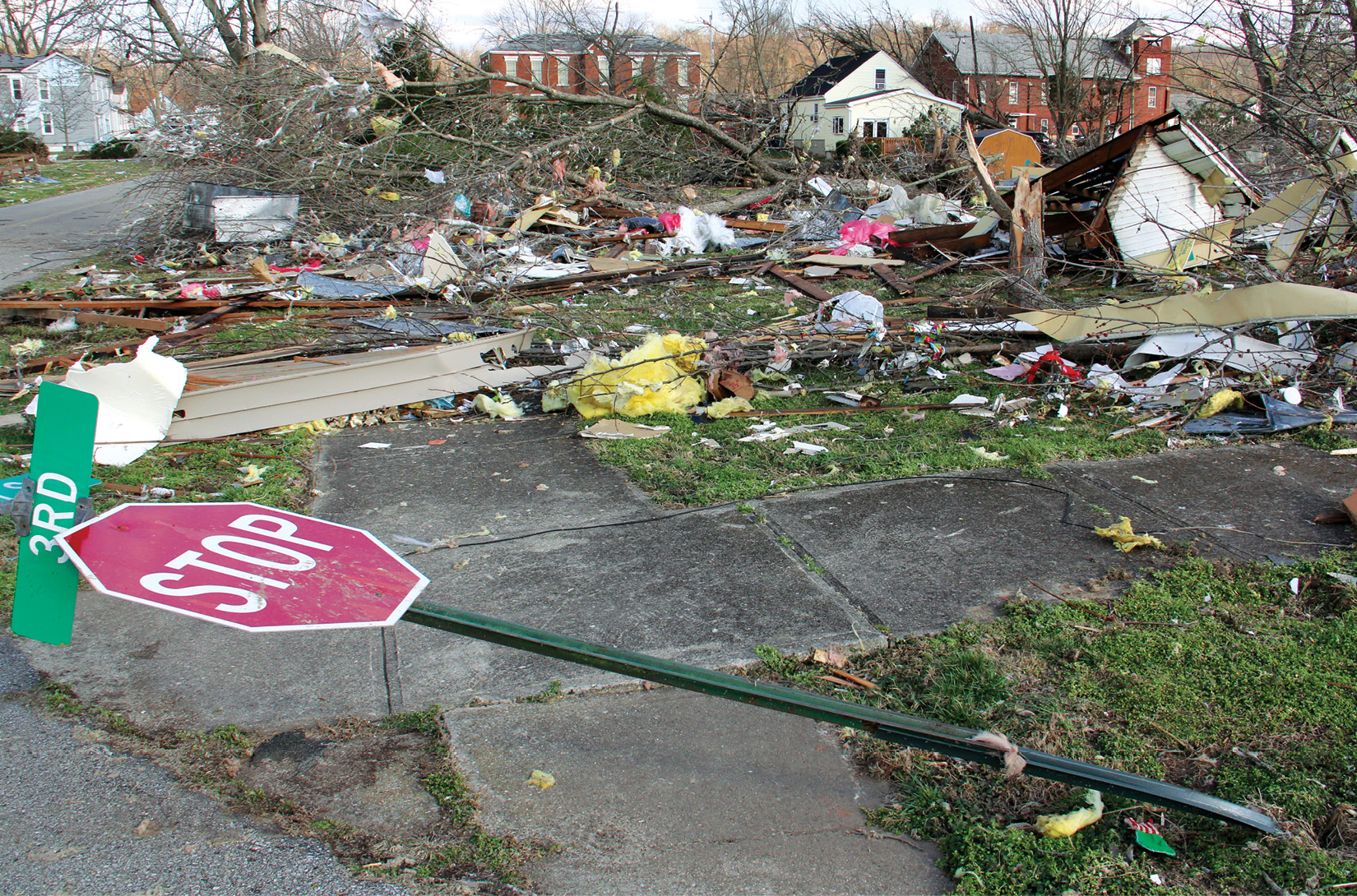
Tornado winds are powerful enough to bend metal, rip off roofs, and topple trees.
Part of the devastation brought about by these southern storms has little to do with weather science or meteorology. A tornado doesnt harm anyone if no one lives in its path. Lots of people live in the South, nearly twice as many as in the Midwest. Many southern homes are less sturdy, too. Mobile home communities are more common where winters are mild.

